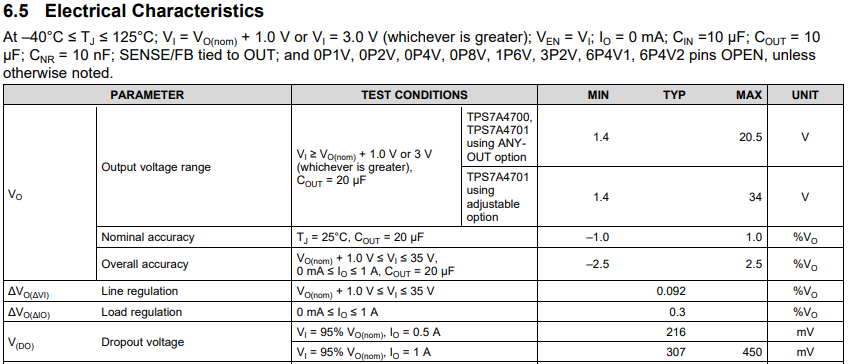When using the adjustable feature on the TPS7A47-Q1, is the output accuracy determined solely by the accuracy of the set point resistors or do I need to consider overall accuracy, line regulation, load regulation specs?
Also, in looking at the overall accuracy, the test conditions state that Vo is at least 1V lower than Vin, is this a constraint in that the output voltage will always be lower than the input? If so, it seems to conflict with the 95% condition listed for line/load regulation. Color me slightly confused.


